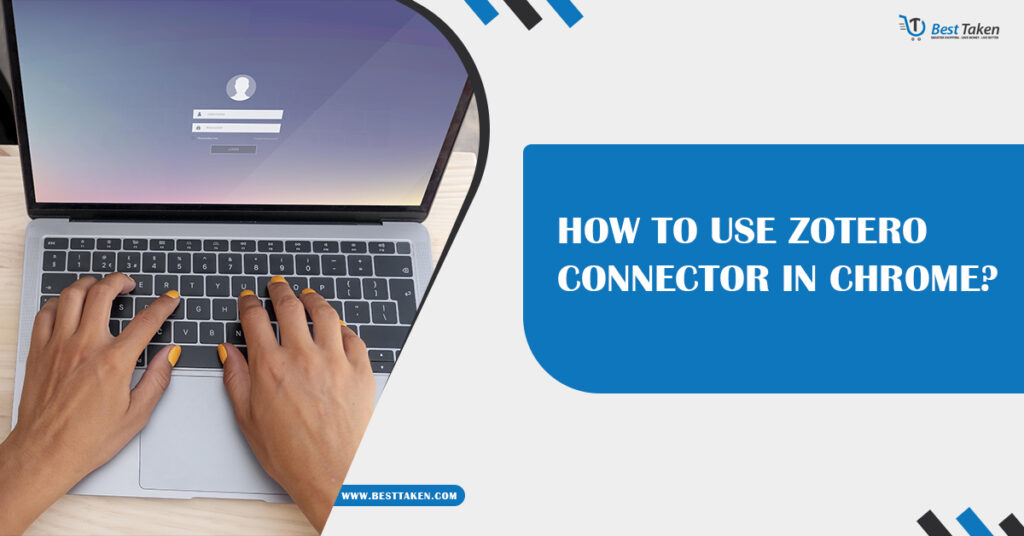The Zotero Connector for Google Chrome is a highly useful tool for researchers, students, and academics who frequently need to capture and organize bibliographic data on the go. In this article, we will guide you step-by-step on how to use the use Zotero Connector in Chrome to manage your citations and references efficiently.
Step-by-Step Guide: How to Use Zotero Connector in Chrome?
1. Install the Zotero Connector in Chrome
Before you can start using Zotero Connector, you need to install both the Zotero desktop application and the Zotero Connector browser extension for Chrome.
Steps to Install:
- Install Zotero: Visit the Zotero website and download the desktop application for your operating system (Windows, macOS, or Linux).
- Install Zotero Connector: After installing the desktop app, go back to the Zotero website and click on “Install Zotero Connector” for Chrome. This will redirect you to the Chrome Web Store, where you can add the extension by clicking on the “Add to Chrome” button.
Once both are installed, Zotero Connector will automatically synchronize with the desktop application, and you will see the Zotero icon in the Chrome toolbar.
2. Setting Up Zotero and Chrome Integration
After installing the Zotero Connector, ensure that the Chrome extension is properly configured to save references to your Zotero library.
Steps to Configure Zotero:
- Open Zotero Desktop: Launch the Zotero desktop application.
- Configure Zotero Connector: Click on the Zotero icon in Chrome’s toolbar to access its settings. The first time you use it, the Connector might ask you to grant permission to communicate with the Zotero app. Click “Allow” to complete the configuration.
The Zotero Connector is now ready to work seamlessly with Chrome, allowing you to save references with a single click.
3. Saving References with Zotero Connector
The Zotero Connector for Chrome is designed to detect different types of information on web pages, such as journal articles, books, videos, or even blog posts. Once Zotero recognizes the type of source, it will adjust the icon on the Chrome toolbar to represent that source, such as a book icon for books or an article icon for journal articles.
Steps to Save a Reference:
- Navigate to a Web Page: Visit any website that contains reference material you wish to save, such as a research article, online database entry, or book listing.
- Click the Zotero Icon: When you are on a page that Zotero can recognize, the Zotero icon in the Chrome toolbar will change to reflect the source type. Click on the Zotero icon to save the citation to your library.
- Choose a Collection (Optional): If you have collections set up in your Zotero library, you can select which collection to save the reference to.
- Additional Features: Zotero will also save a snapshot of the web page, allowing you to access it later, even if the original page is taken down.
Zotero Connector saves bibliographic information such as the title, author, date, and other relevant metadata to your Zotero library. If Zotero can’t capture all the information automatically, you can manually edit or add missing details in the Zotero desktop app.
4. Managing and Organizing Saved References
After you’ve saved references using the Zotero Connector, you can organize and manage them in the Zotero desktop app.
Steps for Organizing References:
- Create Collections: In Zotero, you can create collections (folders) to organize your references by topic, project, or class. Simply right-click on the “My Library” section in the Zotero app and select “New Collection.”
- Tag References: You can also tag references with keywords to help you quickly find and categorize related items. Tags can be added by selecting a reference and clicking on the “Tags” tab in the right-hand pane.
- Add Notes: Zotero allows you to add notes to individual references, which can be helpful for recording research thoughts or summarizing a source.
The references saved via Zotero Connector are synced to your Zotero library, ensuring that everything is accessible from the desktop app or other devices where you have Zotero installed.
5. Generating Citations and Bibliographies
One of the most powerful features of Zotero is its ability to generate citations and bibliographies automatically. Zotero Connector makes it simple to insert these into documents or export them to various formats.
Steps for Generating Citations:
- Drag and Drop: In Zotero, you can simply drag and drop references from your library into a Word or Google Docs document, and Zotero will insert the formatted citation.
- Use Word Processor Plugins: Zotero offers plugins for Microsoft Word and Google Docs that allow you to insert in-text citations and generate bibliographies directly within the document.
- Export Bibliographies: You can also right-click on any reference or collection in the Zotero desktop app and select “Create Bibliography.” Zotero will prompt you to choose a citation style (APA, MLA, Chicago, etc.) and export the bibliography in the desired format.
6. Using Zotero with Online Research Databases
Zotero Connector excels when it comes to saving references from online research databases like JSTOR, PubMed, Google Scholar, and more. Zotero is capable of recognizing metadata on these platforms and accurately saving journal articles, books, and reports.
Steps for Saving from Databases:
- Access a Research Database: Visit an online database like JSTOR or PubMed through Chrome.
- Click the Zotero Icon: The Zotero icon will change to reflect the type of reference Zotero detects. Click the icon to save the reference.
- Download Full-Text PDFs: In many cases, Zotero will automatically download the full-text PDF of the article. Which will be saved to your Zotero library for easy access.
7. Syncing Your Zotero Library Across Devices
One of the best features of Zotero is its ability to sync your library across multiple devices. This means that any references saved through the Zotero Connector on one device. Will available on all devices where Zotero installed and logged in with the same account.
Steps to Sync:
- Create a Zotero Account: If you haven’t already, create a free Zotero account on the Zotero website.
- Sign In on All Devices: Sign in to your Zotero account in the desktop app and any other devices you use. Your library will automatically sync across devices, ensuring you always have access to your research.
Conclusion
Zotero Connector is a must-have tool for anyone doing research or managing citations in Chrome. With the ability to save references, organize them into collections, and generate citations and bibliographies with ease. Zotero makes the process of managing academic work more efficient and streamlined. By integrating it with your browser. You can capture references on the go, stay organized, and simplify your research process across multiple devices. Whether you’re a student, researcher, or academic. Zotero Connector in Chrome is a valuable tool for managing citations and staying on top of your work.



